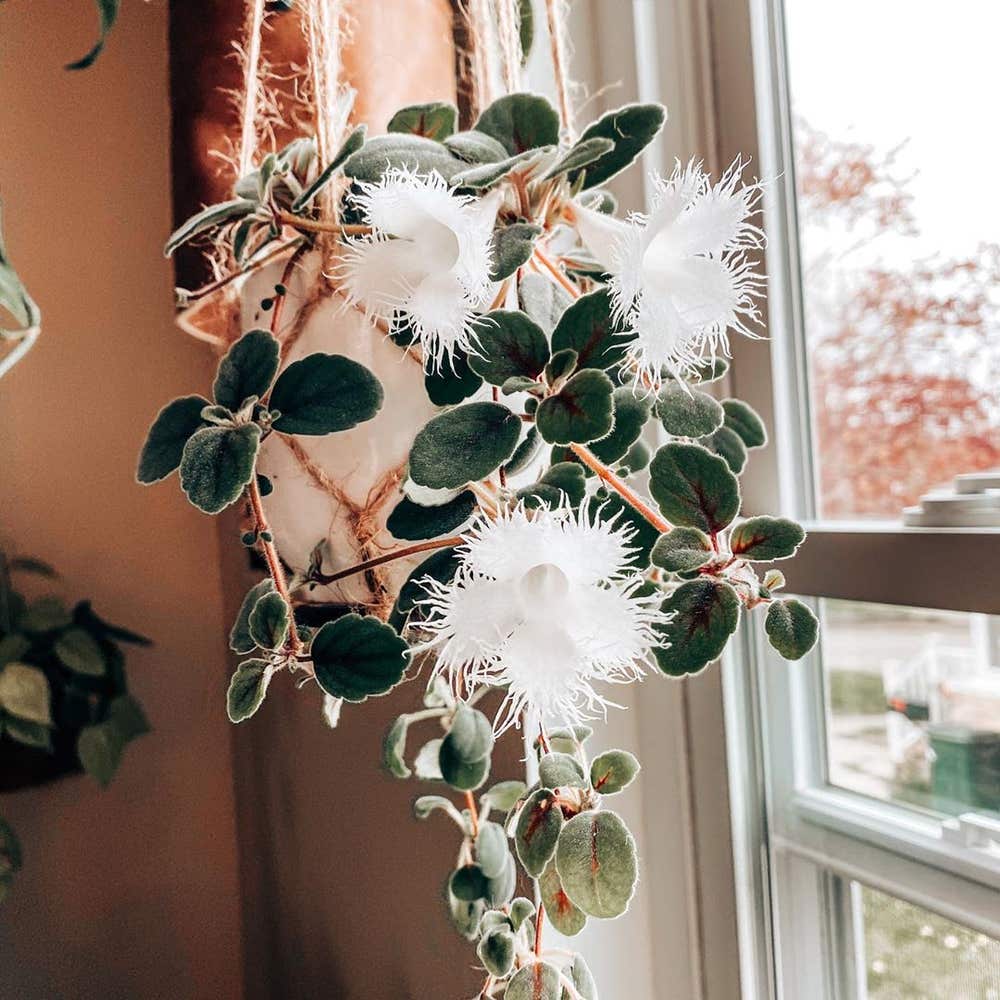




































Episcia Dianthiflora
About Episcia Dianthiflora
Alsobia dianthiflora is native to Mexico, Guatemala, Costa Rica and parts of Central and South America. It is a small-leaved, compact plant that produces large white, frilled flowers and numerous stolons. It needs some warmth and humidity and does well under artificial light or on a windowsill.
Taxonomy

Alsobia dianthiflora
Alsobia
Gesneriaceae
Lamiales
Also known as
Lace Flower, Lace Flower, Lace Flower Vine and Episcia dianthiflora

How to care for Episcia Dianthiflora
How often to water your Episcia Dianthiflora

every 9
Episcia Dianthiflora needs 0.5 cups of water every 9 when it doesn’t get direct sunlight and is potted in a 5" pot.
Use our water calculator to personalize watering recommendations to your environment or download Greg for more advanced recommendations for all of your plants.

Water 0.5 cups every
9
Finding light for Lace Flower in your home

a window
Episcia Dianthiflora can tolerate being far from a window and light source.
Place it less than 6 feet from a south-facing window to ensure it receives enough light to survive 💪.
Select your region to see how the current weather in your area affects the placement of Episcia Dianthiflora in your home 🏡.
How to fertilize Episcia Dianthiflora

Most potting soils come with ample nutrients which plants use to produce new growth.
By the time your plant has depleted the nutrients in its soil it’s likely grown enough to need a larger pot anyway.
To replenish this plant's nutrients, repot your Episcia Dianthiflora after it doubles in size or once a year—whichever comes first.
Care Summary for Episcia Dianthiflora

Episcia Dianthiflora
 Greg recommends:
Greg recommends:
 Water
Water
0.5 cups every 9 days
 Placement
Placement
< 6ft from a window
 Nutrients
Nutrients
Repot after 2x growth
Based on the 4” pot your plant is in, and that it doesn’t get direct sunlight.

 Trending in your area
Trending in your area
 Similar to Episcia Dianthiflora
Similar to Episcia Dianthiflora

Columnea 'Melissa'

Streptocarpus 'Pretty…

Episcia 'Pink Pather …

Acajou

Ambra

Aeschynanthus lobbian…

Cardinal Flower

Sixth Scents

Trailing African Viol…

Dancing Dolphin

Petrocosmea barbata

Telari African Violet

Orange Lipstick Plant

Dale's Smurf Party

Hardy White Gloxinia

Champagne Jam Nematan…

Goldfish Plant
✨ Discover rare plants

Hylotelephium siebold…

Large Leaf Elephant F…

Pseudorphipsalis 'Blu…

Picasso's Paintbrush

Rainbow Echeveria

Burro's Tail

Philodendron 'Silver …

Philodendron eximium

Philodendron 'Gabby'

Echeveria Arrow

Ace of Spades

Raphionacme flanaganii

Marquise de Sevigne

Philodendron 'Glorius'

Eden Climbing Rose

White Apple Moth Orch…

Hoya 'Millie'


















